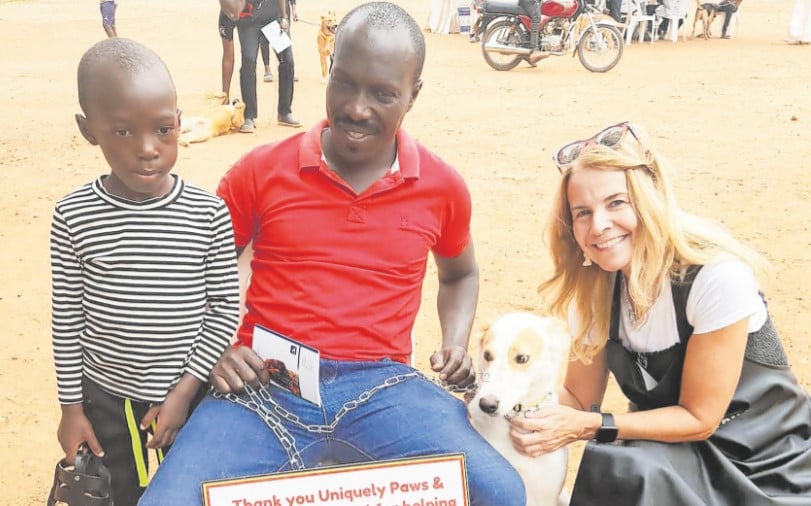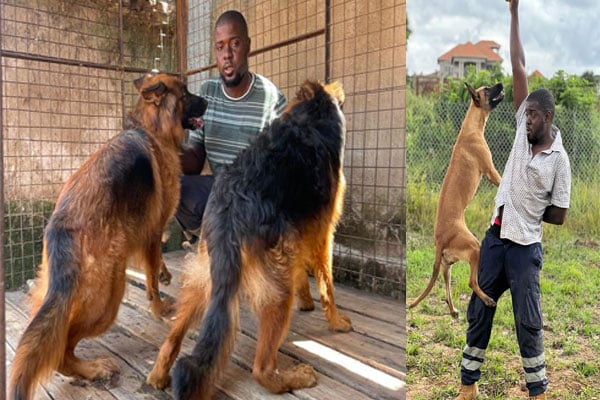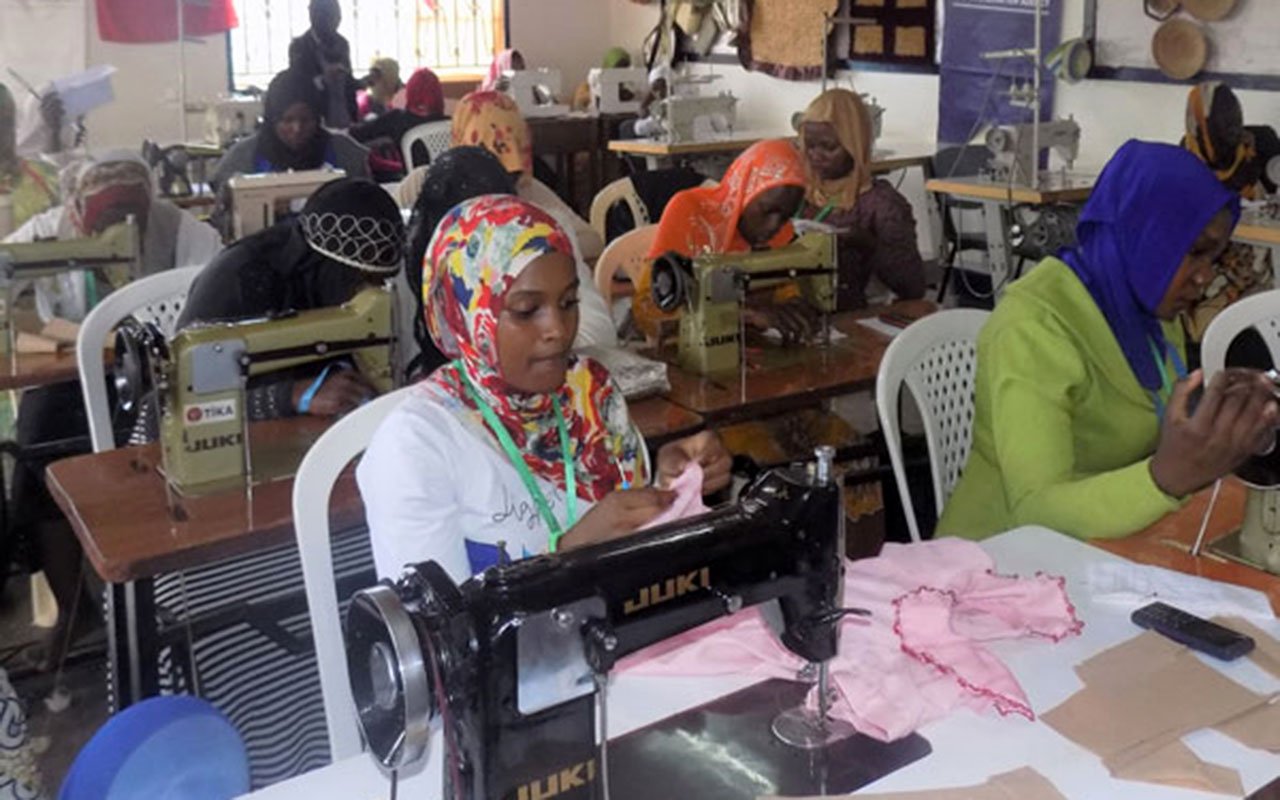Rabies: A deadly dog bite

- Because many people still believe that rabies is a myth, Meg Jaquay, the co-founder of Uniquely Paws Limited, emphasises the need for community engagement and sensitisation. PHOTO | BEATRICE NAKIBUUKA
What you need to know:
- There is no approved treatment for rabies once you have symptoms. So, if you have been exposed to rabies (bitten by or been in contact with an infected animal), contact a healthcare provider as soon as possible.
Last month, Angel Amanyabyona, a Primary Two pupil at Kibuga Primary School in Ndorwa West, was bitten by a stray dog while walking to his grandparents’ home. His mother, Anna Kyarikunda, took the matter lightly and did not take the child to the hospital immediately.
Later, when the nine-year-old developed a fever and started barking like a dog, he was taken to a nearby clinic, from where they were referred to Kabale Regional Referral Hospital. Here, Amanyabyona was diagnosed with a severe case of rabies and sadly, he succumbed to the disease two weeks later.
Amanyabyona’s story is not unique; across Uganda, similar tales unfold as families confront the deadly consequences of rabies.
What is rabies?
Rabies, a viral infection that primarily affects mammals, is most often transmitted through the bite of an infected animal, typically dogs. The disease is almost universally fatal once symptoms appear, making prevention critical. Health experts warn that the current situation underscores the need for increased vaccination efforts, public awareness campaigns and improved access to post-exposure prophylaxis (PEP).
A 2017 veterinary surveillance system analysis reveals that only 10 percent of pets are vaccinated in some regions of the country. This lack of coverage not only puts pets at risk but also increases the threat to human populations, especially children who are often the most vulnerable.
According to the World Health Organisation (WHO), more than 5.5 billion people live with a daily risk of rabies, with 59,000 deaths happening every year. More than 95 percent of these deaths are in Africa and Asia, with the majority occurring from rabid dog bites. Around half of the people who die are children.
How do we get rabies?
Every dog bite is a suspected rabies case, says Dr Dickson Tayebwa, the founder of Vetconekt and lecturer in the Faculty of Veterinary Medicine at Makerere University in Kampala. Although the recommendation is that every dog or cat be vaccinated every year according to the Rabies Act and the Animal Disease Control Act, not many people follow this recommendation. This is why Uganda is one of the countries that are endemic with rabies.
“Originally, rabies is a virus found in wild animals such as bats, foxes and jackals. When dogs or cats are not contained in a shelter and left to roam in the wild, they may get in contact with wild animals and get beaten during fights, thereby contracting rabies,” he says.
If you have not vaccinated your dog or cat and it sustains a bite from an infected one, you may not know until the signs and symptoms start to show. It is also important to note that there are two types of rabies.
In the dumb type, the dog or cat remains unusually quiet, paralysed, salivating and looking confused. The aggressive type on the other hand is when the dog or cat becomes aggressive, hyperactive, restless and bites everything.
“Any dog or person that has rabies can spread it to another dog or person because they will develop aggressive character and may bite anyone or anything,” he says.
“The virus moves from the point of the bite to the brain and this is why they become aggressive. Fortunately, the virus does not kill the animals but they keep the disease and easily spread it to other animals or humans through the saliva during the bites,” Dr Tayebwa adds.
About five to 10 days after the bite, the person or dog may develop symptoms such as fever, excessive salivation, sweating, and itching around the wound. As time progresses, the muscles in the neck become paralysed and swallowing becomes hard.
fter 10 days, the person or dog infected by rabies will become aggressive and bite everything, develop sensitivity to light, fear of water and start barking like a dog. Since there is no known treatment for rabies, the person will die within 14 days.
What to do
When bitten by a dog, do not stop the bleeding, Dr Tayebwa says, adding that bleeding can help wash away any saliva that could be carrying the virus. Wash the wound with running water and soap for about 15 minutes.
“Next, take the person to the hospital within 24 hours. A health worker will assess for any risk of rabies and if found positive, they will be started on anti-rabies treatment, which is a series of shots on the first, third, seventh, 14th, 21st or day 28.”
The patient will also be given an anti-tetanus injection since dog saliva contains a lot of bacteria that can also cause tetanus.
Dr Taremwa advises locking up the dog if possible to prevent it from biting other people. If you know of a vet, call them to examine the dog.
Community awareness
One of the most tangible intersections of animal protection and public health lies in the realm of zoonotic diseases; those that can be transmitted between animals and humans.
“For example by protecting domestic animals from rabies, we not only shield them from a dreadful fate but also create a robust barrier against the transmission of this fatal disease to humans through bites.”
Animal vaccination programmes are a cornerstone of animal protection, serving as a proactive defence mechanism against these zoonotic threats. But it is not affordable for the more than one million domestic animals in Uganda.
In response to the rising threat, the coalition including the Ministry of Agriculture, Kampala Capital City Authority, the Uganda Small Animal Practitioner Association (USAPA), Vetconekt and the students of Makerere Veterinary College, vsf Germany, Uganda Welfare Animal Coalition and Uniquely Paws stepped up their efforts.
Campaigns promoting rabies vaccinations for pets and awareness programmes targeting communities have been initiated. The Rabies Prevention Programme, in collaboration with the Ministry of Health, aims to educate villagers about the importance of vaccinating pets and recognising the symptoms of rabies.
Meg Jaquay, the co-founder of Uniquely Paws Limited emphasises the need for community engagement. “Education is key,” she asserts. “Many people still believe that rabies is a myth. We need to show them that it is a very real and preventable disease.”
Mobile vaccination clinics are becoming a lifeline in rural areas where villagers are encouraged to bring their dogs for vaccination, often incentivised by the promise of a healthier pet and a safer community. The message is clear; vaccinate to protect both animals and humans.
She says, “We are seeing more and more children bringing their cats and dogs to the clinic and what this indicates is that we are building a future generation of responsible people who are going to take animal welfare seriously.”
Outreach
Members of the clinic have been to Kaseses, Lukuli, Naguru, Mpererwe and Mutungo and have so far carried out 568 surgeries on male and female dogs to prevent them from reproducing in what is referred to as spaying.
“We will continue to see a decline in the number of new puppies coming into our population since a female dog can produce up to 40 puppies every few years. This year alone, we have spayed more than 400 female dogs, keeping 16,000 new puppies from our communities. This, we hope, will help us control puppy overpopulation and move closer to Rabies-free 2030,” she notes.




